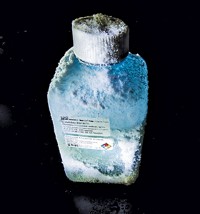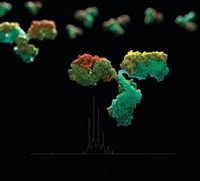Advertisement
Grab your lab coat. Let's get started
Welcome!
Welcome!
Create an account below to get 6 C&EN articles per month, receive newsletters and more - all free.
It seems this is your first time logging in online. Please enter the following information to continue.
As an ACS member you automatically get access to this site. All we need is few more details to create your reading experience.
Not you? Sign in with a different account.
Not you? Sign in with a different account.
ERROR 1
ERROR 1
ERROR 2
ERROR 2
ERROR 2
ERROR 2
ERROR 2
Password and Confirm password must match.
If you have an ACS member number, please enter it here so we can link this account to your membership. (optional)
ERROR 2
ACS values your privacy. By submitting your information, you are gaining access to C&EN and subscribing to our weekly newsletter. We use the information you provide to make your reading experience better, and we will never sell your data to third party members.
Analytical Chemistry
New antibody standard could aid biopharma development
NIST reference material will help companies design and test analytical technologies for assessing therapeutic proteins
by Celia Henry Arnaud
August 2, 2016

The National Institute of Standards & Technology has a repository of approximately 1,200 reference materials—from peanut butter to nanoparticles—that scientists can purchase to calibrate their instruments and establish quality-control protocols. The newest reference material, a monoclonal antibody, or mAb, may be the agency’s most extensively characterized yet. The Y-shaped protein, which NIST released last week, has undergone a battery of tests to comprehensively assess its composition, purity, and long-term stability.
The reference material—dubbed NIST RM 8671—will give biopharmaceutical companies, technology developers, and regulators a common substance for comparing the performance of existing analytical technologies and for testing new ones.
The extensive characterization is the outcome of more than three years of collaboration between NIST and the biopharmaceutical industry, says John Schiel, the NIST chemist who led the effort. The reference material, which costs $858 for 800 μL of a 10 mg/mL solution, is made of a particular immunoglobulin G antibody donated by MedImmune.
Schiel teamed up with Oleg Borisov of Novavax and Darryl Davis of Janssen Pharmaceuticals to organize a round-robin study to characterize the antibody. The organizers recruited more than 100 collaborators from companies, regulatory agencies, and universities around the world to analyze the protein in detail.
The effort culminated in a three-volume series published by the American Chemical Society, which also publishes C&EN. The book series contains “our initial historical baseline data” on the antibody, Schiel says.
“The availability of the NIST monoclonal antibody reference material will help advance the analytical methodologies required in the development of biopharmaceuticals,” says Lisa Marzilli, a mass spectrometrist at Pfizer. “This well-characterized antibody can be used for instrument and software demonstrations, analyst training, system suitability assessments, and method development and transfer activities. Scientists in different groups and companies will now be able to easily compare instrument performance and method capabilities using the same standard.”
Richard Rogers is “very excited” that the new reference material is available. Rogers, a scientist at Just Biotherapeutics, is leading a consortium that hopes to replace many of the quality-control assays that biopharma companies usually perform when releasing protein-based products with a so-called multiattribute method (MAM) based on mass spectrometry.
Rogers plans to use the NIST standard as a test molecule in the consortium’s evaluation of the MAM. In particular, they plan to send stressed and unstressed samples of the reference antibody and see whether the MAM can identify new mass spec peaks in the stressed samples.
Additional antibody standards are in the works, Schiel says. NIST has already received a donation of a second monoclonal antibody from Janssen Pharmaceuticals. “We’re going to do all the characterization and release this as a reference material as well,” Schiel says. “The hope is that we will continue to increase our panel of therapeutic-related proteins as reference materials.”





Join the conversation
Contact the reporter
Submit a Letter to the Editor for publication
Engage with us on Twitter